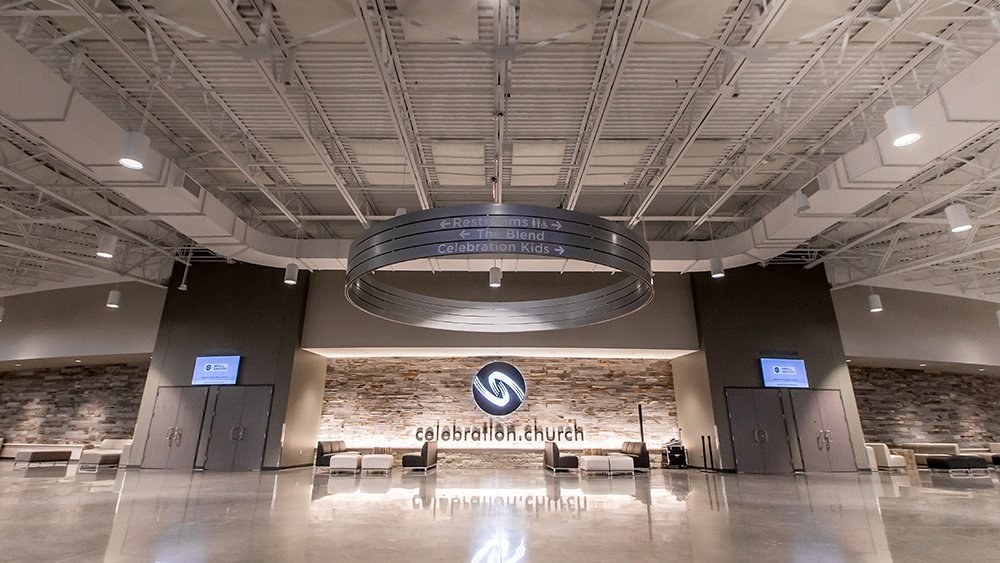What Makes Good (Church) Architecture?
When people think of architecture, they may think of a small structure like a simple home or office building. Or perhaps they envision the opposite — a complex structure such as a great cathedral or otherworldly skyscraper towering over people below. The thoughts of what architecture looks like may vary, but what makes good architecture? The size? The location? the appearance?
Purpose
Many people feel good architecture is about purpose. Architecture must solve a problem for people. It must anticipate a need and then satisfy it in a way that improves people’s lives. It needs to provide space for connection, inspiration, and growth — for individuals and the community as a whole.
Reliability
Some put the emphasis on reliability. The structure must be physically sound and be able to withstand extreme elements. It must remain steadfast over time, even when the conditions around it change. Its construction should apply modern techniques and be energy efficient. The people inside need to be safe, comfortable, and protected.
Beauty
Others feel strongly that architecture is about beauty. It must be its own kind of artwork and evoke deep emotion. It’s crucial to capture the attention of people who would have otherwise just walked by. Its beauty needs to be executed in such a unique way that people will remember it over time.
A Delicate Balance
The importance of purpose, reliability, and beauty are undeniable. But good architecture is a delicate balance of all three. So there is a vital combination to ensure the architecture — seen and unseen elements — create harmonious and well-rounded architecture.
Early Church Architecture
Homes were the original gathering places that Christians worshiped in — especially when worshipping God was illegal in parts of the world or during specific eras. But when consistent public gatherings were allowed, architects had to answer some basic questions.
Even in its earliest forms, physical churches were built with people and function in mind. That’s not to say the architecture wasn’t beautiful — but the importance of what was happening was inside the structure itself. Who would attend the church, and how many people would need to fit inside at once? What items or furnishings would the church hold? The weather, region, nearby communities, and available building materials were also all-important elements that an architect thoroughly considered.
Many architectural techniques and possibilities have drastically changed since those historic days. For example, most churches in America have indoor plumbing and electricity as a standard — something the earliest churches could have only dreamed of.
Still Important
Much has changed with buildings and the construction process itself, but the core pieces of good architecture remain unchanged: purpose, reliability, and beauty. When it comes to good church architecture, these elements remain equally true — maybe even more so.
Church architecture is more than establishing a pretty building for religious rituals or spiritual entertainment. It is about offering a safe and comfortable place to nurture connection and holiness. Whether it’s an exciting and engaging children’s department or a parking lot with ample parking and a simple, clear traffic flow. These details of church architecture say, “There is a place for you here. You, your children, and your entire family are welcome, loved, and safe within these walls.”
Purpose in God
What greater purpose could any structure have than to host God’s children as they worship, learn, and build community? Likewise, the purpose of a church building is to create a space for believers to gather together, worship our Creator, and encourage one another.
Reliability for People
The reliability of good church architecture enables a building to become a second home for many. It must remain strong and efficient. People from near and far should know that no matter what they are going through, their house of worship will be there for them for many years to come.
Beauty in Creation
When we look at creation, it is obvious that God enjoys beauty. From the unexpected beauty found in microscopic organisms to the majestic awe of snow-tipped mountain ranges to the mysterious beauty of the deep ocean — we are surrounded by beauty. Good church architecture reflects that beauty in various and unique ways.
The size, location, and style of architecture are important factors. But independently, those factors are not strong enough to carry the full weight of defining good architecture. Nevertheless, the common threads of good architecture — purpose, reliability, and beauty — have withstood the test of time and will continue into the future.
So, architecture isn’t about singling out one piece of thread. Instead, it’s about masterfully weaving all of them together to produce a fullness — and that is what creates good architecture.


